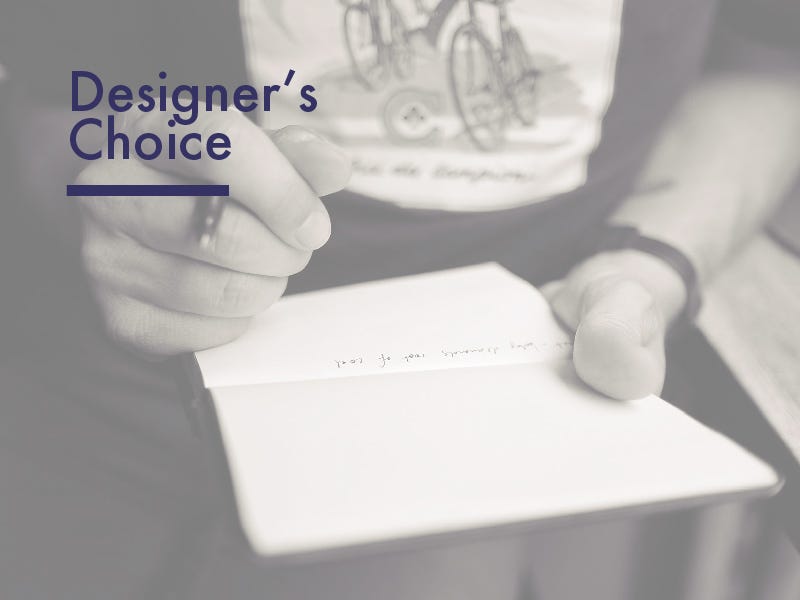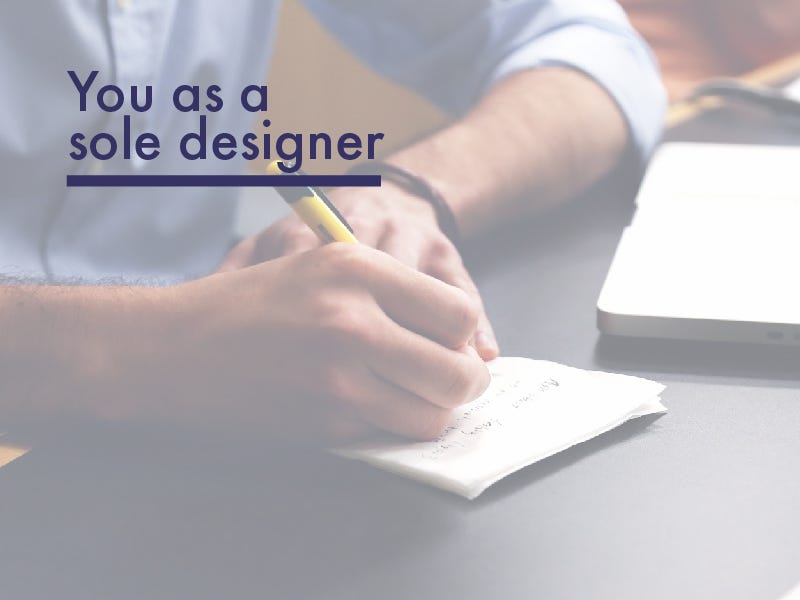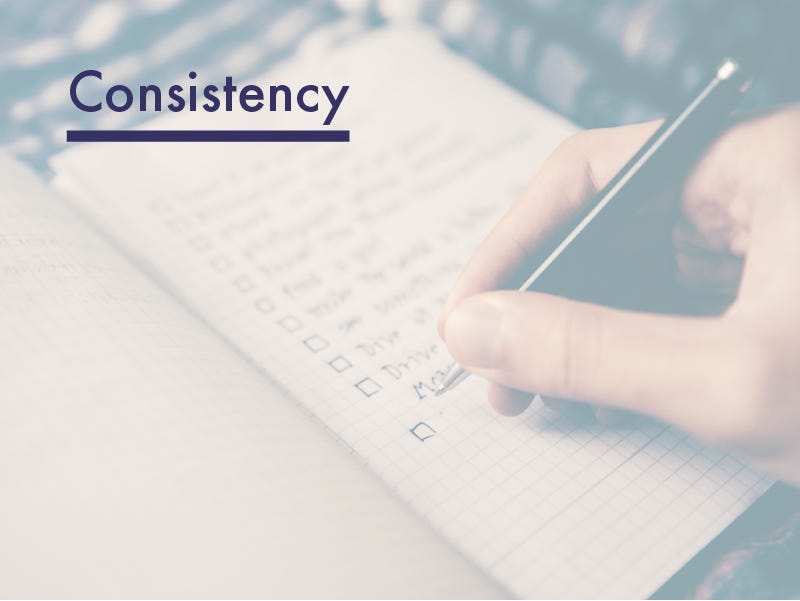One of the things that you begin to wonder when you’re starting out as a freelance designer is whether or not you should choose to brand what you are doing.
I’ve had really good conversations with members of the Compass of Design Community about branding their freelance business that led to some interesting discoveries.
The choice of what to brand yourself as is never an easy one. You want to connect your heart and soul to what you do.
Whether your choice is naming your freelance gig or to keep it under your personal name, you want to make sure that name is the right one.
Don’t feel like you made the wrong choice either because it’s entirely possible to make the transition from one to the other. It’ll take work, but by focusing on overlapping clients, process, professionalism and your current audience’s attention. You’ll be able to make the switch.
So how do you choose?

The Designer’s Choice
The choice is really up to you and how you want to position yourself.
Positioning yourself in a certain market or niche can help you with clarify how your operation runs.
You might want to be a “big-name” designer someday. You might be comfortable running a tight-knit operation. Maybe you want to scale to a large design team, taking on some of the biggest brands in the globe.
Depending on how you plan on running your operation, you’ll need to decide where you want to position your brand before choosing a name.

How do you want to position yourself?
There are designers that have chosen to use their name as their own business.
There are other designers that chose to brand their business separate from themselves.
Each one has chosen their name because it works for them.
Are you wanting to be seen as a premium brand? Do you want to have a full team in the future? Is being more personal and transparent important to you? Are you wanting to be seen as an affordable option?
Figure out the goals you have for your career as a designer, and figure out what clients you want to be bringing in as a designer.
The branding on your business along with your name can change how you are seen in your market.
Let’s look at both options:

You as a sole designer
I have a lot of respect for anyone who decides to go out alone as a sole designer of their own operation.
You are going to be doing a lot of things yourself unless you can get really good at automation and delegation. Being on your own means that you value having a small operation and trust yourself to get things done.
Be proud of that.
Choosing to use your own name as a freelancer creates a very transparent operation to your clients.
I chose to use this option early on and for nearly 1.5 years and got repeat work under “Darian Rosebrook Designs” as my name of choice.
This builds what is called a lifestyle business.
Essentially, you are married to your profession. This is a great thing because people associate the word “designer” with your name. So any time someone starts mentioning design (or needs to find a designer), your name is more likely to pop up.
You begin to come across as a very transparent and personal business. People will feel more comfortable sharing information with you and can see that there is a human being behind what they’ll get by hiring you.
Where that could bottle neck your business is trying to grow your business.
I don’t plan on selling my business in the future, but I can’t imagine there’s a lot of people willing to buy “Darian Rosebrook Designs” without rebranding it. But also it’d be difficult to present a “team” with my name as the brand.
‘In my experience, when I went from doing web design to logos and branding, people were still asking me to do websites. They also came to me because I seemed cheap enough to work with because I wasn’t running an agency (more on that in a bit).
If I was changing my positioning with client work, it would take a lot to disassociate myself as a low-priced web designer.
If you have a very unique name, it has built in Search Engine Optimization. This means it’ll be very easy to look you up and hire you for what you do.
Be careful though, if you aren’t squeaky clean with your social media, people can find all sorts of stuff on you on the internet.
Even then, it’s very hard to be known as a “top” freelancer on the internet without scoring some really important jobs or having some agent looking out for you. But it’s entirely possible to be a designer branded as yourself and make good money.
People will search out designers by name because they have heard of them or they’ve been recommended to them.
The association of “design” and your name is the best reason to go for this option.

You with a team
I know from personal experience that trying to do everything yourself can be very daunting and very exhausting. After nearly a year of being the sole designer of my operation, I have been focusing on positioning my design business to be able to hire people in the future.
When I am ready to get more people in my operation, one of the first places I’ll be looking to hire freelancers and employees is the Compass of Design Community. I don’t plan on doing small jobs forever. Because the time was right, it was time for me to choose a business name.
My decision to switch from “**Darian Rosebrook Designs” to “[So Magnetic](https://somagnetic.com/)**” was to facilitate this change. I currently have enough of my bills covered that I can take some steps to build out the new business name the right way.
I could still have done this with my personal name or a variation. I know there are a few people that I follow and have had really good conversations with that chose to use their personal names within their business (e.g. Sean McCabe from “seanwes” and Gary Vaynerchuck from “VaynerMedia” ).
The name “So Magnetic” is actually a play on a few things. I love rare earth minerals like gems and magnets. As a branding designer, you want to create something that attracts people to the business. So you’d want the branding to be magnetic. Also since So Magnetic owns Compass of Design, a compass is a tool made with magnets. All of these names are built off of my idea that anyone can be taken as a raw, unrefined thing and be refined into something strong and valuable.

Consistency
The key to being able to effectively position yourself and your business name is with consistency.
No matter what you choose, you want to be consistent in how you present what you do.
Everything from introducing yourself to potential clients, your wording on your website and social media profiles, and your markets within the work you do should reflect your position of choice.
For those who have an established personal brand, this can be particularly frightening if you’re deciding whether to switch what you chose before now.
If you have been running that brand for a while, you have an audience and list of clients that seems too big to leave behind. If you chose a business name and feel like you need to be more personable, you don’t want to lose the large clients you’ve been working with forever. If you’ve been going with a personal name, you might be afraid your old clients will be scared off by becoming a company.
But this transition doesn’t have to be frightening. You simply have to overlap the brands until you are able to phase out the other.
In my transition from personal to business, I’ve kept my personal site open with my contact form now including my business name in there.
Any new clients will be directed to use So Magnetic’s process and it’s website.
All my old clients, I let them know I’m transitioning my practice to So Magnetic and that I’ll be using the process through there, reassuring them that they get a more professional experience through the process.
Any case studies that exist from my old practice I’ll be contacting the companies to ensure I’m able to switch to the new business name. If they don’t agree, that’s fine. They can live on the old personal site which is now it’s own acquisition channel.
Any new case studies will be placed under the So Magnetic brand as I start to position it as a premium design service.
The work that you choose to present from a client you’ve designed for will bring about more jobs like that one. So make sure you present only your most professional work in order to make sure your portfolio converts new clients.
So if you want to continually get more premium design clients, keep posting premium design work.
Start being consistent throughout the transition, be vocal about the change, and endorse your new brand as it’s own practice and you’ll be in the clear.
Naming is never an easy task, but hopefully now you have some insight on which to choose in the near future.
I do have a book recommendation if you still need help choosing a name to go by. It’s been super helpful to me, and my main reason for mentioning it. You can use my link or search for it yourself. But it’s a great help.
 (afl)](https://cdn-images-1.medium.com/max/3840/0*xr_jXc3_64P3hWvi.jpg)
Don’t Call it That(afl)
This book was really brilliant in the exercises and branding expertise you get by reading it.
Even though I’m mainly a designer by trade, my skills need to include helping clients with using brand names, messaging, and double-entendres.
So if naming things isn’t your strong suit, this book is a good resource to help you avoid searching through those thousands of blog posts.

